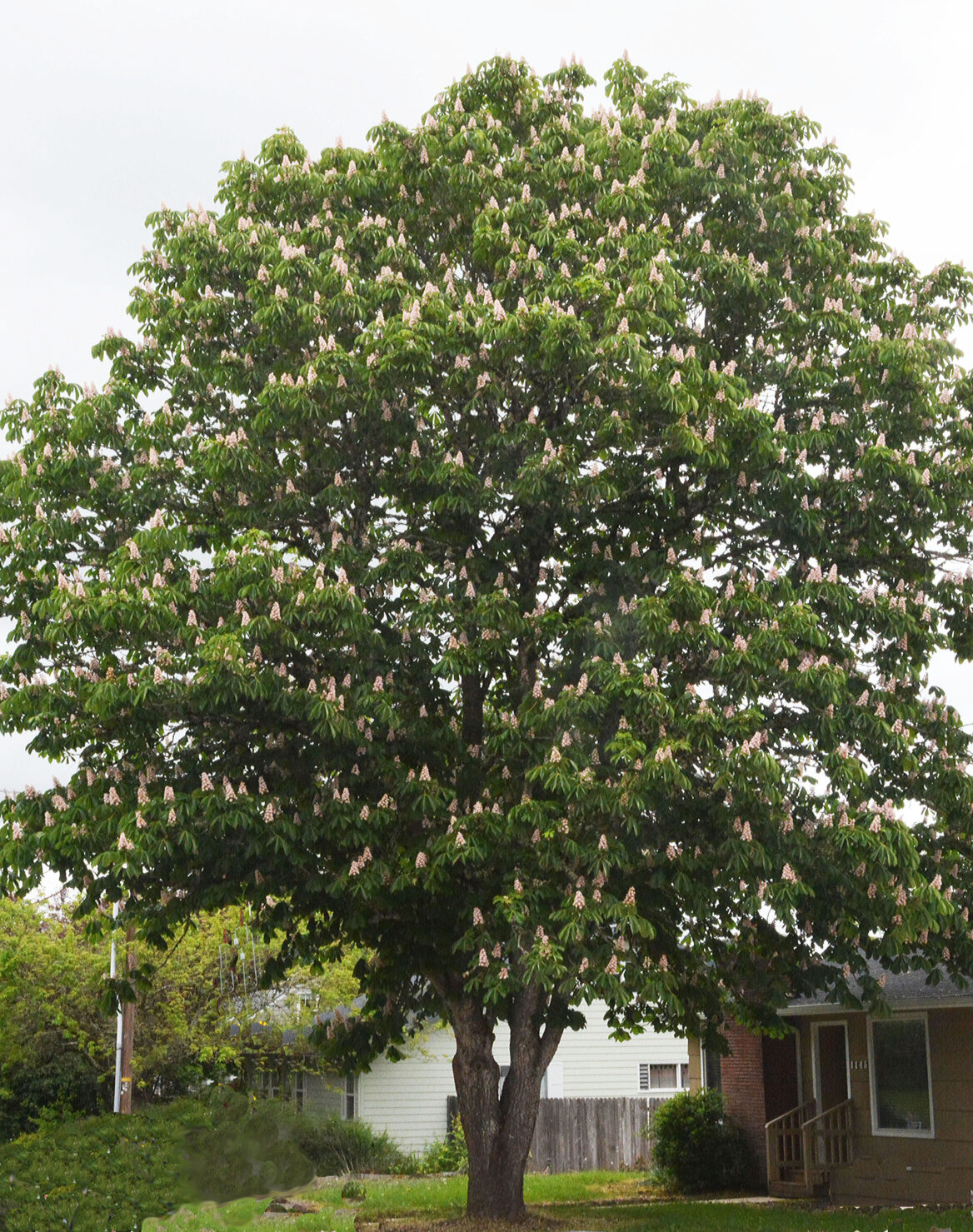Aesculus hippocastanum ‘Baumannii’
Horse Chestnut
Aesculus hippocastanum ‘Baumannii’ is characterized by large, dark-green, fan-shaped leaves and produces giant double white flower candles in mid-spring. It has a narrower growth habit and blooms later and for a longer duration compared to Aesculus hippocastanum. The flowers of Aesculus hippocastanum ‘Baumannii’ are mostly sterile, resulting in minimal fruit production. The nuts produced in autumn are toxic to humans and animals. Once established, Aesculus hippocastanum ‘Baumannii’ is challenging to transplant due to its taproot. It is ideal for use as a shade or paddock tree and features yellow autumn leaves. Aesculus hippocastanum ‘Baumannii’ prefers moist, well-drained soil and does not tolerate dry soil well. Aesculus hippocastanum is deciduous and native to a small area in the Pindus Mountains (Northern Greece) mixed forests and Balkan (Albania) mixed forests of southeast Europe. Learn more about Aesculus hippocastanum. Aesculus hippocastanum ‘Baumannii’ was noticed by A. N. Baumann (according to him) as a sport on a tree of Aesculus hippocastanum growing in the garden of a Mons. Duval, near Geneva, during the years 1819 to 1822. He sent grafts to his father’s famous nursery at Bollwiller in Alsace, France, from whence it spread into cultivation.
Other common name(s):
Synonyms:
$107.12 – $156.00
Deciduous
Height: 8.0m
Width:
5.0m
Estimated 10 year height and width
Aesculus hippocastanum ‘Baumannii’ stock information
Full Stocklist| Grade | Height | Standard | Available | I/P | Qty / Price |
|---|---|---|---|---|---|
| 35L | 1.4-1.6m | 4 | 4 |
$156.00Add to cart |
|
| 25L | -m | 2 | 0 |
$107.12Add to cart |
|
| 45l | 1.4-1.6m | 5 | 0 |
$156.00Add to cart |

